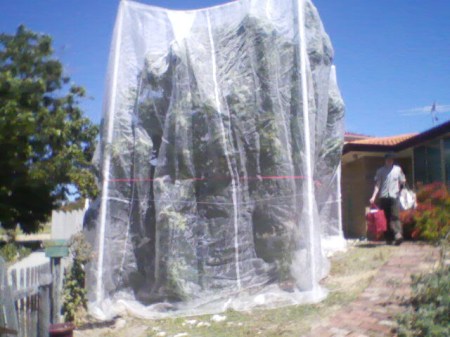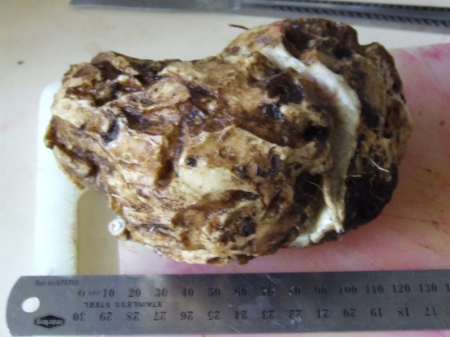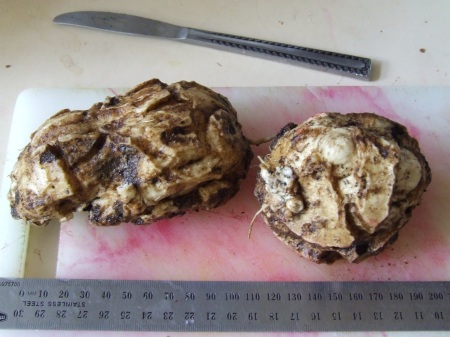I recently saw an online exchange where a US correspondent thought a Perth writer was being a wooss for grumbling about a maximum temperature of 40 degrees. After all, their maximum was under 32, frozen lakes and all.
The Perth writer informed them that much of the world uses Centigrade, and that 40 here is 104 there.
So much for being in a “temperate” zone. I still resent the misleading books that said that strawberry, chamomile, and thyme like full sun.
But temperature is not the main thing that triggered this entry. We have enthusiastic pests, and they make things – well – different from the images in magazines’ garden pages.
Consider growing figs:
We have Mediterranean fruit fly and vinegar fly, which turn nine-tenths of figs more than two-thirds ripe into acid-bottomed disappointments. Also, we want to protect them from the rainbow lorikeets- a destructive pest species of bird from the Eastern States, which some careless fool released here and which are here destroying more than they eat. Still, even though it would get rid of the lorikeets, we don’t want to use strong poisons. Result? A four-metre-plus high net bag for the tree, with 1mm mesh size (25 * 25 per inch) as recommended for exclusion of vinegar fly. (Thanks to Kawase, S. and K. Uchino, 2005. Effect of Mesh Size on Drosophila Suzukii Adults Passing Through the Mesh. AnnualReport of the Kanto Tosan Plant Protection Society, 52, 99-101.)
It worked. We were surprised, the improvement on quantity as well as quality was impressive.
I have been growing sweet potatoes – a true sweet potato, with degrees of purple inside and with edible leaves. I had had a few salads, but was carefull to leave plenty to help it grow. When the patch was over one square metre and climbing my baby date palm, I thought that the patch had developed well enough for me to take some roots –
After removing the damaged bits, not enough left to bother with.
I had given up on growing large carrots and potatoes in that area because something eats 0.8 cm (0.3 inch) holes through them. It seems that the denizens of our soil like sweet potato even more. I suspect African Black Beetles, and they are not easy to control without rather nasty chemicals.
Which leaves the question of how the organic farmers do it… well, my root vegetables now grow in pots carefully separated from the local soil. They can’t walk in, but the blighters do fly, so I may have to do repotting if they get in. Or put them under the fig, or the apple and quince (they are next for the net, as our fruit fly damage the fruit even though the maggots don’t survive long. Seriously, brown lines from the bite-dimple to the core, and sometimes fungal infection follows.)
My task now is to find beetle-resistant crops – or grow the sweet potato more as a green than a root vegetable: it survives where lettuce and pak choy wither.
Tags: beetle, damage, garden, garden net, pests, roots, vinegar fly




June 6, 2014 at 9:49 am |
Can be disappointing getting bug riddled crops – good on you for keeping your head up and still working hard at it!